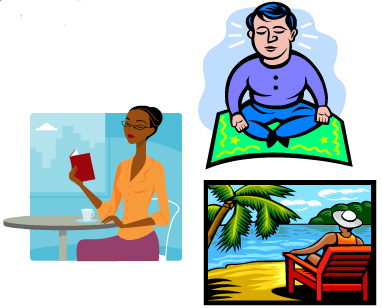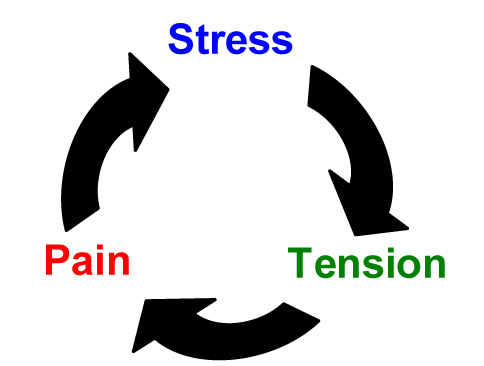Ease tension
Stress, tension and pain
 You may have noticed that when stress is high, your tension levels rise and pain gets worse. On the other hand, you might also notice that pain itself can be a source of increased stress and tension. This can feel like a vicious cycle that is difficult to break.
You may have noticed that when stress is high, your tension levels rise and pain gets worse. On the other hand, you might also notice that pain itself can be a source of increased stress and tension. This can feel like a vicious cycle that is difficult to break. 
All of us experience different levels of stress, tension and relaxation at different times in our lives. The tension we experience in response to stress can be emotional, such as being worried, fearful or frustrated. Stress can also affect how we think. For example, when stressed, we tend to focus more on negative events.
Our bodies may respond physically to stress, for example, with muscle tightness. Tense muscles can aggravate some kinds of pain and can use up energy that we might need for other tasks. Restoring the body's energy requires adequate rest, relaxation and proper nutrition.
Suggested techniques to ease stress and tension
In this section you will find some ways to lower stress and restore energy through techniques designed to decrease muscle tension and improve relaxation.
Regular practice of one or more of these techniques may help you gain a sense of control over your personal experience of the Stress – Tension – Pain cycle. With this cycle under better control, you will have more energy and focus for making other positive behavior changes in your life.
Relax your breathing
Many people have heard that taking deep breaths can help reduce stress, but most haven't been taught how to do it the most helpful way. The secret to relaxed breathing is to push your stomach outward as you inhale. This allows you to inflate your lungs more fully, so you can breathe more slowly. Instead of breathing about 14 times a minute like most people, or about 18 times a minute like someone who is highly anxious, work toward a slower, relaxed breathing rhythm of 6-10 times per minute. If you can, try to spend a little longer blowing the air out, as this is the most relaxing part of the breathing cycle. Breathing in this way will turn down your body's stress-response system and allow you to relax more fully.
Relax your muscles
You may have noticed that stress, anxious mood, and worrisome thoughts can lead to tense muscles. Have you also noticed that relaxing your muscles can reduce anxious mood and worrisome thoughts? Try sitting or lying comfortably and consciously relaxing each of your muscle groups (e.g., starting at the head and working down the body). Pay special attention to common trouble spots like the forehead, jaw, and shoulders. Smooth your forehead, unclench your jaw, put a slight smile on the corners of your mouth, and let your shoulders relax and drop into a more comfortable position.
Relax your mind
Once you have practiced a breathing or muscle relaxation exercise as described above, you may want to imagine yourself visiting a peaceful, pleasant location. Imagery typically works best with eyes closed and muscles relaxed. The place you imagine can be one that you have actually visited or one you develop by just using your imagination. Some people imagine taking a walk along a beautiful, tree-lined path. Others imagine visiting the beach or a peaceful river or lake. Make this experience as real as possible by imagining as many details as you can. For example, imagine what kind of day it is, the look of the sky, and all the things you see around you. Imagine the beautiful colors you see, enjoyable scents you notice, and the pleasant temperature of the air around you. Relax in this place for a time and enjoy your visit.
When you are ready to leave your imaginary place, readjust slowly by bringing your attention back to the room you are in. Slowly open your eyes and gently move your body, noticing the things around you as you end your relaxing journey.
Create an action plan for this strategy.





